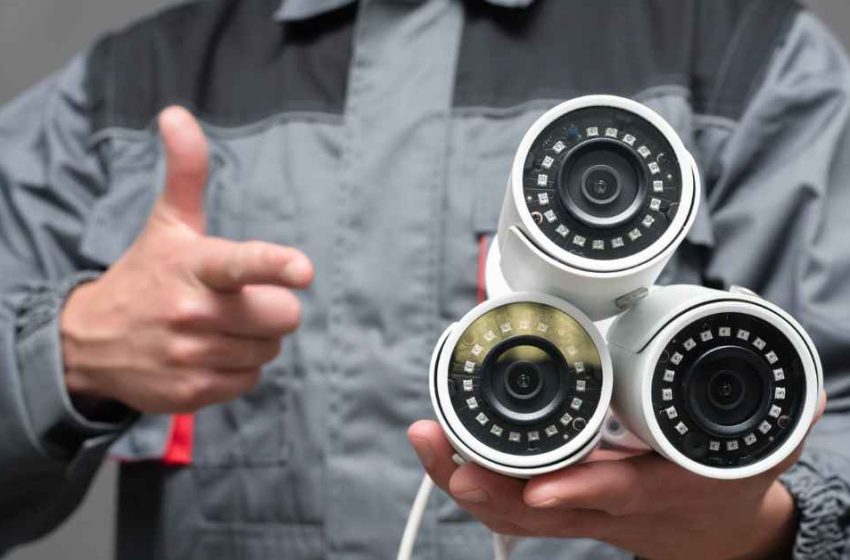Can Panoramic Cameras Replace Multiple Traditional Cameras in Home Surveillance?

Panoramic cameras, also known as 360-degree cameras, have emerged as a promising solution for home cctv camera installation, offering a wide field of view that can cover large areas with a single device. However, the question remains: can panoramic cameras effectively replace multiple traditional cameras in home surveillance setups? In this article, we’ll explore the capabilities of panoramic cameras, their potential advantages and limitations compared to traditional cameras, and whether they can serve as a viable alternative for comprehensive home security.
Expansive Coverage with a Single Camera
One of the primary benefits of panoramic cameras is their ability to provide expansive coverage of an area with a single device. By capturing a 360-degree view of the surroundings, panoramic cameras can monitor large rooms, open spaces, or entire outdoor areas without the need for multiple cameras. This wide coverage reduces the number of cameras required for surveillance, simplifying installation and minimizing equipment costs.
Panoramic cameras utilize advanced lens and image processing technologies to capture and stitch together multiple video streams into a seamless panoramic view. This comprehensive coverage allows homeowners to monitor their property more efficiently and detect any suspicious activity from a centralized location. Additionally, panoramic cameras can be particularly useful for homes with limited mounting options or space constraints, as they offer flexibility in placement and require fewer devices to achieve complete coverage.
Reduced Blind Spots and Improved Situational Awareness
Traditional surveillance cameras typically have limited field of view, which can result in blind spots and gaps in coverage, requiring multiple cameras to achieve comprehensive surveillance. In contrast, panoramic cameras offer 360-degree coverage, minimizing blind spots and providing a more complete view of the surroundings. This enhanced situational awareness enables homeowners to monitor their property more effectively and respond promptly to any security threats or incidents.
With panoramic cameras, homeowners can observe the entire area without the need to switch between multiple camera feeds, simplifying monitoring and reducing the risk of overlooking critical events. By capturing a panoramic view of the environment, these cameras provide a holistic perspective that enhances situational awareness and helps homeowners make informed decisions in real-time. Whether monitoring indoor spaces or outdoor areas, panoramic cameras offer a comprehensive surveillance solution that can improve home security.
Challenges of Panoramic Camera Implementation
While panoramic cameras offer significant advantages in terms of coverage and situational awareness, they also present certain challenges that may limit their effectiveness as a standalone solution for home surveillance. One potential limitation is the distortion inherent in panoramic images, which can affect the clarity and accuracy of captured footage, particularly at the edges of the frame. Additionally, panoramic cameras may struggle to provide detailed imagery of distant objects or individuals due to the wide-angle lens used to capture the panoramic view.
Another challenge is the processing power and bandwidth required to handle the high-resolution video streams generated by panoramic cameras. Transmitting and storing panoramic footage can strain network resources and storage capacity, especially in larger surveillance systems with multiple cameras. Homeowners may need to invest in robust networking infrastructure and storage solutions to accommodate the demands of panoramic camera deployment effectively.
Complementary Use with Traditional Cameras
While panoramic cameras offer significant advantages in certain scenarios, they are not necessarily a replacement for traditional surveillance cameras. Instead, they can complement traditional cameras to provide comprehensive coverage and enhance overall security. By strategically deploying panoramic cameras in conjunction with traditional cameras, homeowners can leverage the strengths of each type of camera to create a balanced and effective surveillance system.
Traditional cameras excel in capturing detailed imagery of specific areas or points of interest, making them ideal for close-up monitoring or identifying individuals and objects with precision. In contrast, panoramic cameras offer broad coverage and situational awareness, making them well-suited for monitoring large areas or detecting general activity. By combining both types of cameras in their surveillance setup, homeowners can achieve optimal coverage and maximize the effectiveness of their home security system.
Conclusion
 In conclusion, panoramic cameras offer unique advantages in terms of coverage, situational awareness, and simplicity in home surveillance setups. While they may not completely replace traditional cameras, panoramic cameras can serve as a valuable component of a comprehensive home security system, providing expansive coverage and reducing the need for multiple devices. By understanding the capabilities and limitations of panoramic cameras and integrating them strategically with traditional cameras, homeowners can enhance their ability to monitor and protect their property effectively.
In conclusion, panoramic cameras offer unique advantages in terms of coverage, situational awareness, and simplicity in home surveillance setups. While they may not completely replace traditional cameras, panoramic cameras can serve as a valuable component of a comprehensive home security system, providing expansive coverage and reducing the need for multiple devices. By understanding the capabilities and limitations of panoramic cameras and integrating them strategically with traditional cameras, homeowners can enhance their ability to monitor and protect their property effectively.


